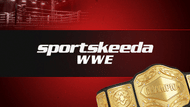
Fans and wrestling personalities tend to split the history of WWE into eras — the Golden era, the Attitude Era and so on. This is primarily due to the shifts in tone, character, or content that occurred during those time periods.
The overall theme is that the world of professional wrestling is constantly changing in an attempt to stay relevant and keep people interested in the product. This is evident in WWE when examining the current product and comparing it to the weekly shows and pay-per-views from the early 2000’s.
With that being said, here are 10 things in WWE that were common in the early 2000’s but are seldom seen today.
Insane Vince McMahon ideas that got canceled - Watch Here!
#10 Animals
Animals, most commonly dogs, were used often on WWE television during the early 2000s as part of storylines, accompanying superstars to the ring, or as a match stipulation. There is a rich tradition of animals in professional wrestling, like the story of Bruno Sammartino wrestling an Orangutan, the wrestling bears in the early 1900’s carnivals, and Matilda the Bulldog who was the mascot of the British Bulldogs.
Although the history is there, most likely due to the unpredictable nature of animals on live television, WWE has steered clear of using animals regularly on television.
Just take a look at the comments superstars and producers have made regarding the Kennel From Hell match between the Big Boss Man and Al Snow to understand how the motivation to use animals has changed from then to present
#9 Two-man announce team

A combination of Michael Cole, Tazz, Jim Ross, Jerry Lawler, Johnathan Coachman and Paul Heyman among others, called the majority of WWE programming throughout the early 2000’s.
However, it was almost always as a two-man announce team unless playing up tension among them via storyline (Coach coming out to call with Lawler and Ross to lead to a match).
Fast forward to today and you will only find three, and for a short time, four-man booths on Raw, Smackdown and NXT programming. There may be instances of a two man booth of minor shows such as 205 Live or Main Event, but the top tier shows all feature three-man announce teams.
#8 Special sets for each pay-per-view event

One of the nice thrills of the early 2000’s was the pyro explosion at the beginning of a pay per view and the reveal of the entrance way for the evening. The swinging hooks at Backlash 2001, The giant throne at King of the Ring 2001, the Las Vegas theme for Vengeance in 2005, everything felt unique because it was and really helped make even the “B Pay Per Views” feel special.
In present day, besides WrestleMania, the rest of the “Network Specials” feature virtually the same entrance way and set up as Raw and Smackdown.
This sameness takes away any form of uniqueness and personality these shows would have had, and replaces it with the feeling that you get from watching an episode of Raw. It conditions fans not to expect anything special because those moments are “saved” for the “A Shows”.
#7 Adult content in promos
The current WWE product is relatively tame when it comes to promos from superstars. Due to a more child-friendly product, Superstars are restricted in their use of curse words, slang terms, and insults regarding appearance, personality, etc.
While this does not hinder some stars from being able to talk the talk, it does take away from edgy nature of the product.
In the early 2000's however, the hottest and most entertaining segment of the night involved The Rock or Stone Cold cutting a promo on Johnathan Coachman or another unfortunate target.
In the said promo, they often insulted the recipient's intelligence, looks, lack of sexual prowess, orientation, and more all to laughs and chants from the audience.
#6 Bra & panties matches
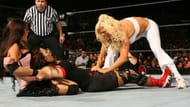
The rules of the classic tuxedo match (competitors disrobe the other of their tuxedo to win) was applied to the female Superstars in the late 90’s and carried over into the early 2000’s.
These were known as the Bra & Panties matches, featuring already scantily clad women disrobing the other into even more risqué undergarments to win. This stipulation was even applied to WWE Women’s Championship matches during that time.
Much like the relationship with Playboy, WWE distanced themselves from this type of risqué and edgy content when switching to a PG rating.
#5 Hardcore matches

The concept of hardcore rules can be traced back decades in professional wrestling. Mick Foley looks back fondly on his time competing in the King of the Deathmatch tournament in 1995, a prelude before his time in ECW.
The fascination with hardcore wrestling reached a fever pitch in the late 90’s and early 2000’s with the creation of the WWE Hardcore Championship. During the 2000’s, the championship was defended under 24/7 rules, meaning all you needed was a referee to challenge for the championship. It could be defended anywhere, anytime, and everything was legal.
These stipulations led to some of the most outlandish and savage matches and segments in WWE history. The championship was contested in the streets, on the banks of rivers, and bars just to name a few. Everything from mounted animal heads, to frying pans, were used as weapons during these contests.
While stipulation matches still exist such as No DQ, Falls County Anywhere, none of the outcomes are as outlandish as the contests over the Hardcore Championship in the early 2000’s.
#4 Show-long storylines

One of the best examples of a show-long storyline occurred during the Invasion storyline in the early 2000’s, on Monday Night Raw episode 425. This episode placed Stone Cold Steve Austin spending the evening at the Friendly Tap Bar in Rhode Island, drinking beer and contemplating his role in the “War” with the Alliance.
Austin was shown in the bar multiple times during the program with the payoff coming in the main event when Stone Cold made his return to the WWE and handing out stunners to numerous members of the Alliance.
On present programming, usually once a Superstar appears on screen, they are finished for the night, leaving a lot to be desired in the storytelling aspect of professional wrestling.
#3 Man on woman violence
![Enter caption]](https://staticg.sportskeeda.com/editor/2017/09/9320b-1505264991-800.jpg?w=190)
While examples of this are still available in present day WWE (Reigns spearing Stephanie McMahon at WrestleMania 32) they are usually presented as accidents.
This was not the case in the early 2000’s, as it was practically an every week occurrence, whether it was Stone Cold stunner-ing Stacy Keibler for not liking beer, or the Dudley Boyz putting various women through tables.
#2 Bleeding on purpose
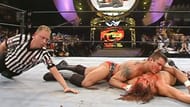
It was not rare for someone to bleed on every show during the early 2000’s. It also did not matter if you were in the mid-card, a comedy act or a main eventer, any segment could feature someone being busted open or “wearing a crimson mask.”
In today’s WWE product, once you see the referee put on the medical gloves, you know there is blood somewhere and it will be patched up before the match continues. This can take away from the pacing of the match and irk fans of the older days.
The practice of blading or getting colour to increase drama during a match has been stopped by the WWE.
#1 Head shots with weapons

Early 2000’s WWE programming is home to some of the most wicked steel chair shots in professional wrestling history (just ask Mick Foley). Head shots were not specific to chairs, and Superstars also commonly took kendo sticks, sledgehammers, nightsticks, and trashcans right to the face.
While certain precautions can certainly be taken to lessen the damage of these strikes, they are still painful and can result in injuries (concussions).
Weapons to the head have mostly been stopped on WWE programming, and chair and kendo stick swings almost always catch the opponent in the stomach or across the back, and other weapons are sparingly used. This is due to ongoing concerns in all of professional sports regarding concussions and the long term effects.
Although some fans believe the WWE needs to reincorporate some of the subjects on this list, the company has shown in some instances that with proper storytelling and the right people, you can create a great professional wrestling show.
Make Sportskeeda your preferred choice for WWE content by clicking here: Source preferences

